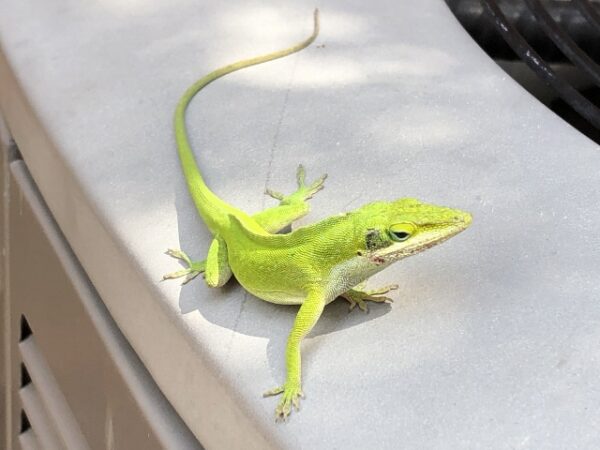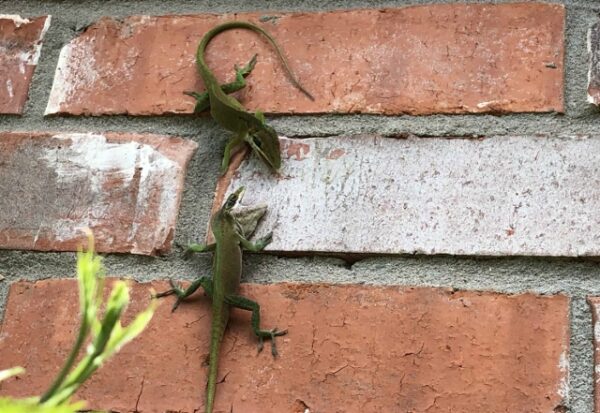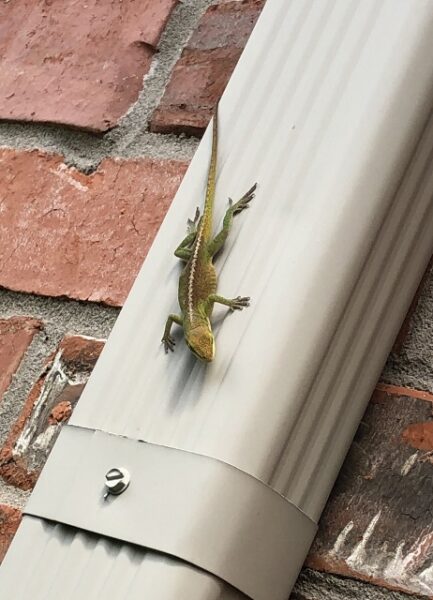Texas Backyard Critters

The amount of wildlife that inhabits my garden beds continues to amaze me. I’m not a big reptile fan, but I have formed an attachment to one green anole, a lizard, that enjoys soaking up sun rays on the brick ledge outside my bedroom window. I’ve named him Harry after the anole in the BBC series, Death in Paradise.
I find Harry taking up his sunbathing perch most afternoons. Sometimes he clings to the brick facing outside the front door. Other times he’s positioned on a wrought iron butterfly sculpture. And, if feeling particularly private, I’ve found him snugged up in a Rose of Sharon bush.

I’ve always thought of Harry as a peaceful, quiet sort of guy. Imagine my surprise, that while trimming up some overly exuberant trumpeter vine, I encountered Harry in mortal combat with another green anole. This was a pitched, dinosaur-style battle. The lizards circled each other and bobbed up and down. At different intervals the anoles took turns puffing up their dewlap, that’s the pinkish-red neck flap under their chin. It didn’t take me long to discover the reason for the skirmish. Clinging to a nearby rainspout was a female anole, oblivious to the fight taking place three feet away. Alas, Harry did not fair well in the battle, and retreated.

The battle I witnessed is common in springtime. Green anoles jealously guard their territory, fighting intruders, especially when a female is involved. Another interesting tidbit, green anoles change colors, sometimes with incredible rapidity. During Harry’s battle royal, the two lizards transformed from forest green to brown and back again. In retreat, Harry shifted back to the bright grass-green skin I’m accustomed to. Scientists believe humidity, mood, temperature and health trigger color shifting, not a camouflage adaption. I’d always believed green anoles were a type of chameleon and was surprised to learn that they are more closely related to iguanas than chameleons.
I’ve discovered more green anoles in the yard. There is one little fellow who suns itself on my compost bin – a great place to catch a few rays and snatch a bite to eat (lots of ants around the bin). Harry’s opponent, in the side yard, likes to hide within my trumpeter vine. And there is a baby anole in the front yard who suns on a low rock in the afternoon. I’m sure, if you look closely, you, too, may have a few lizard friends in your own backyard.
More Anole Tidbits
Green anoles are diurnal, which means they are daytime critters
Great for the garden, anoles eat bugs, slugs, moths, and worms
Another species, the non-native brown anole is an invasive species out competing its green anole cousin in our area
Anoles live two to eight years
Green anoles can be kept as pets
 Copyright secured by Digiprove © 2020
Copyright secured by Digiprove © 2020 
